Holocaust 2 - Industrialized Death - GE/TT V2
The links below will help you with translating tools between English and Spanish.
1. Audio of a words in both English and Spanish. Will also translate phrases.
2. Google Search - Espana: The word can be typed in English, and the search finds results in Spanish, including images
3. Also Google Arabic is available.
2. Google Search - Espana: The word can be typed in English, and the search finds results in Spanish, including images
3. Also Google Arabic is available.
****************03/16/2020*********************************
Holocaust - Part II
Imprisonment and Killing
Imprisonment and Killing
Often to make big things happen people have meetings, sooooo....On January 20, 1942, fifteen high-ranking Nazi party and German government leaders gathered for an important meeting about what to do about Jewish people in Europe and the world.


Reinhard Heydrich led the meeting, and he was a leader in the SS (They were Hitler's bodyguards, and eventually ran the Concentration Camps. really NASTY people.)
The main thing that came out of the meeting was an idea called the "final solution to the Jewish question in Europe." In effect, the final solution was a plan to exterminate all Jews they could get their hands on.
The main thing that came out of the meeting was an idea called the "final solution to the Jewish question in Europe." In effect, the final solution was a plan to exterminate all Jews they could get their hands on.
Reinhard Heydrich - The SS officer who led the meeting. Which symbol on his hat is most connected to the idea of death? The lack of emotion on his face means what/
The "final solution" was the Nazis' code name for the deliberate, carefully planned destruction, or genocide, of all European Jews. The Nazis used the non-scary term "final solution" to hide their policy of mass murder from the rest of the world.
This report was used at the conference so the planners would know the number of Jews they were thinking about murdering
In fact, the men at Wannsee talked about methods of killing, about liquidation, about "extermination.“
The video below shows a scene from a movie about the Wanssee Conference. They are talking about the need to physically eradicate (get rid of) the Jews
Listen for when the main speaker mentions taking the Jewish people to "The East" to work. Do you think he meant to work, or something else?
SEE!!!!!!! It was not just something that happened!! It was planned!!! Over a LONG time!!!! By lots of people!!!!!
Concentration Camp System – 1933-1945.
Some of the camps were work camps. The Germans used people they had captured to do work.
Others were only for killing. BUT...even in the work camps people often died from:
In the earliest years of Nazi control, different concentration camps were started to arrest opponents (people who did not agree with them) of the Nazis. Not Jews yet, just people the Nazis did not like. In the spring of 1933, the SS started Dachau concentration camp in Germany so they could punish people they had arrested, and make them work. They used this as a model when they began the Final Solution plan.
Others were only for killing. BUT...even in the work camps people often died from:
- not enough food,
- too much work, and
- too many diseases with no medical help.
Early Concentration Camps
In the earliest years of Nazi control, different concentration camps were started to arrest opponents (people who did not agree with them) of the Nazis. Not Jews yet, just people the Nazis did not like. In the spring of 1933, the SS started Dachau concentration camp in Germany so they could punish people they had arrested, and make them work. They used this as a model when they began the Final Solution plan.
Dachau Concentration Camp. Notice the guard tower, the fence that has electricity running through the wires, and the buildings where the prisoners would sleep (Do you see the people???)
In fact those that ran the concentration camps came to be called the Death's Head brigade because of the symbol on their hat.
Notice the skull on the black band of the hat. The man with the glasses was the leader of the SS, Henirich Himmler (Why do you think they were proud of their Death Head symbol?)
Work Camps In The Concentration Camp System
After the Germans tried to invade The Soviet Union, and the entry of the United States into World War II in December 1941, the German government knew they would have to fight a long war.
Many of the men of working age were now in the German army. This resulted in shortages of workers to make weapons, machinery, airplanes, and ships to replace German losses. The SS, the ones that ran the Concentration Camps, started SS-owned companies to produce the needed equipment. It also agreed to provide workers to other companies located near concentration camps. This labor was really slave labor, because it was done by concentration camp prisoners.


Many of the men of working age were now in the German army. This resulted in shortages of workers to make weapons, machinery, airplanes, and ships to replace German losses. The SS, the ones that ran the Concentration Camps, started SS-owned companies to produce the needed equipment. It also agreed to provide workers to other companies located near concentration camps. This labor was really slave labor, because it was done by concentration camp prisoners.

Concentration camp workers formed up and waiting to go to work in a nearby factory

The factory where they worked was I.G. Farben. They lived in Auschwitz III.
Death Camps – Other Purposes.
Yes, the Nazis had camps where part of the main purpose was to kill. The most infamous one was called Auschwitz, and was located in Poland.

You can easily see Auschwitz. All of the lines leading to it show railroads. Railroads from all over Europe. How do YOU think the Germans used the railroads?
Death Camps - Medical Experiments
“Experiments” were also done at these camps. Hideous and perverted (VERY VERY evil and sick) medical experiments were done on prisoners against their will.
Nazi doctors at a concentration camp experimenting on how the human body responds to being kept in very cold water for long times. They used prisoners to do this.
Often they would die as a result. For example, in one camp called Dachau, German scientists experimented on prisoners to determine the length of time German air force soldier might survive with little oxygen, or in frozen water (see above).
In Sachsenhausen (another camp), experiments were conducted on prisoners to find vaccines for deadly contagious diseases. At Auschwitz III, the SS doctor Josef Mengele conducted experiments on twins to seek ways of increasing the German population by breeding families that would produce twins.
The twins at the Auschwitz concentration camp who were left behind when the Germans ran away because the Soviet Union army was getting near
Death Camps – Death
There were different ways in which the Germans would kill people at the Concentration Camps.
Some would be starved, and some would be worked to death. What follows here describes what happened to most of the people sent to Death Camps.
It took them a bit of time to develop the system, but eventually it worked like a factory. Trains would bring people to the camps, where they would be sorted. 90% of the men, and 95% of all women that arrived were sent to the Gas Chambers.
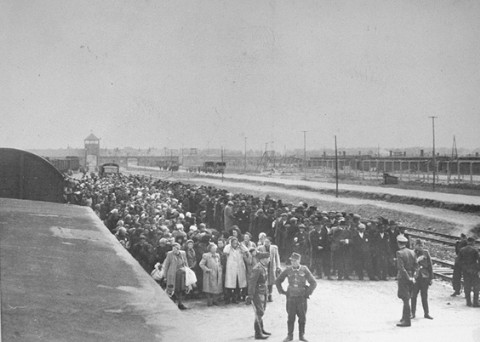
All of these people just arrived on a train. The Germans standing in front of them have sorted them into those who would be allowed to live (so they could work as slaves) on the right, and those who on the left who would immediately go to the gas chambers where they would be killed.
Gas Chamber Inside
The Germans made the people take off all of their clothes (so they could give them to poor Germans back in Germany), forced so many of them into rooms like this that no one could move , let the temperature rise, and dropped in poison gas pellets that released a poison that would make them suffocate
Gas Chamber Outside

This is the outside of one of the gas chambers at Auschwitz. The actual gas chamber was underground. The part of the building you see was where the ovens were they used to cremate (burn) the bodes to dispose of them. If you look closely you can see a line of people on their way to the chambers.
Zyklon B - The poison was actually green-white solid pellets that release poison gas when they were in the open air.
The gas would make it so the people could not breathe. After about 30-35 minutes, the moving and sound stopped. They waited a little bit more and then opened the door. After the gas was out, they sent in the prisoners to take the bodies to the ovens.
Before putting the dead bodies into the ovens to get rid of them they checked the mouths so they could take out any gold teeth and filings they found. The Germans sent this to their banks in Germany to help pay for the war.
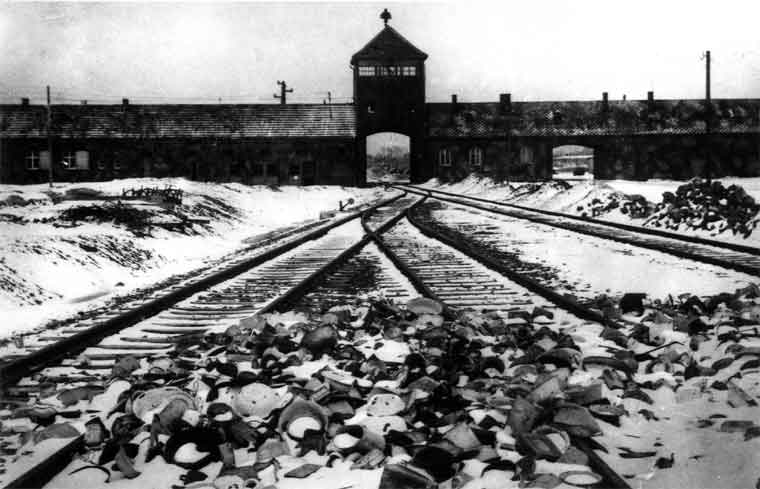
The pile in the front of the picture is of a bunch of the wooden bowls the prisoners had used for many different things when they were held here as prisoners. Over these train tracks many people were led to their death.
Resistance in Concentration Camps
The Jewish people did not always just give in to the abuse by the Germans.
Jewish prisoners assigned to Crematorium IV (One of their killing places) at the Auschwitz-Birkenau killing center started planning a revolt after learning that they were going to be killed.
Young Jewish women, like Ester Wajcblum, Ella Gärtner, and Regina Safirsztain, had been smuggling small amounts of gunpowder from the weapons factory within the Auschwitz buildings. They gave it to men and women in the camp’s resistance movement (those who were planing to fight back), like Róza Robota, a young Jewish woman.

Róza Robota
Róza Robota then passed the gun powder to her workers in the Sonderkommando, the special squad of prisoners forced to work in the camp’s gas chambers.
On October 7, 1944, having learned that the SS was going to kill much of the Sonderkommando squad, the members of the Sonderkommando at Crematorium revolted. The Germans crushed the revolt, but the prisoners had shown their spirit. They had not just given up.
Liberation From Concentration Camps – 1944-1945
The people of the Soviet army were the first to find a major Nazi camp, reaching the Majdanek camp in Poland, in July of 1944.
Surprised by the rapid Soviet advance, the Germans attempted to hide the evidence of mass murder by demolishing the camp. German camp guards set fire to the large crematorium used to burn bodies of murdered prisoners, but in the their quick attempt to leave, the gas chambers were left standing.
See Majdanek at the red arrows
Surprised by the rapid Soviet advance, the Germans attempted to hide the evidence of mass murder by demolishing the camp. German camp guards set fire to the large crematorium used to burn bodies of murdered prisoners, but in the their quick attempt to leave, the gas chambers were left standing.
In the summer of 1944, the Soviets also overran the sites of the Belzec, Sobibor, and Treblinka killing centers. Look at this map and you can follow how the Soviet Army was moving forward. They were on their way across Poland to Germany.
As you see, there were many camps. The most infamous (famous for a VERY bad reason) was named Auschwitz, which you have already learned some about.
When the Soviets started to get near to this camp the Germans started to march many of the prisoners away from the Soviets towards Germany on what came to be called Death Marches. You can imagine why they were given this name.
Death march away from Auschwitz. see the German guards with guns?

Henry Greenbaum

Personal Story of Death March
Following is a personal story of a Holocaust Survivor Named Henry. He is telling the story of the exact moment of his liberation.

Henry Greenbaum
HENRY GREENBAUM: We were marching, we were sleeping over in that wooded area during the night. We came early in the morning, we heard them, wasn’t quite yet at midday because we didn’t have any watches but we could tell by the sun. That it was not quite midday yet. We heard a lot of commotion going on. A lot of, we could see the highway from the wooded area, we could see the highway. And there were a lot of tanks, jeeps, motorcycles, trucks and army soldiers, they were coming through, tons of them, but we didn’t know who they were. Were they Germans, were they Americans. We did not know who they were, so we kept looking, looking, looking, watching them, and then all of a sudden we turned around our two guards with the dogs took off, and they escaped, they let us sit there in a circle and didn’t do anything.
BILL BENSON: Out in the woods?
HENRY GREENBAUM: Out in the woods. So we were, they told us a lesson before, we tried to escape the previous time. That’s what happens to you when you try to escape. They killed all the wounded. So that was still in my mind, but everybody was scared to run anyway. We were sitting in a circle and just looking for them and we didn’t see them. I guess they were trying save their own skin. They probably knew that these were Americans with the, we didn’t know. They probably knew so they were trying to save their own neck and they ran away from us. And out of nowhere as we were sitting just in the column, a big tank comes off out of the column and comes towards us. It knocks over trees and underbrush and he rolls up…
BILL BENSON: And you still don’t know who…
HENRY GREENBAUM: …we still don’t know who he is, and we kept saying for sure now the Germans are going to kill all of us. Now we are all going to get killed, for sure and it so happened it wasn’t that. Who was it? It was an American tank, and the little hood, that little thing that they get out of. What do you call it?
BILL BENSON: The hatch.
HENRY GREENBAUM: The hatch, opened up and there comes another soldier with blonde hair, jumped up and he said “You are all free.” “You are free, free” I think he jumped off and he hollered for his partner to throw some rations down and we were fighting like cats and dogs trying to get a ration, I never got to one anyway. They would fight, and so he saw we were going to hurt each other. So he stopped and he told us to go across the road with him, follow his tank and he will take us across to the farm. There were quite a few of us and they are liberated, and there is plenty of food there. And we followed it.
BILL BENSON: Behind the tank?
HENRY GREENBAUM: Behind the tank, don’t walk near the side, he said just behind me. And we walked. It looked like forever, it was only maybe a half a mile but it looked like forever till we got there. So what did we do? We come there finally in the farm and right in front of the farmer’s house were three big pails of potato peelings with white powder all over, and what did we do? We never made the door inside to go looking for food, we saw this food here and when your hungry this look like, like one of the biggest steaks you could eat in your life, but we got on the floors started stuffing us up with these potato peelings with the white powder and I didn’t want any more food after that, I got through eating that, and once we opened the door we could not believe it that it was true. They had potato’s, boiled potato’s which we never got, and then they had milk and water and big breads that the farmers baked and they, all of them were sick in there moaning and groaning because they were overeating and not having food for five years and now all of a sudden you got all the food that you want. There with the medic, the guy that took us in with the tank, had to call for reinforcements. And they came in and people got medicine, I showed them my wound on my head, which was getting infected, they cleaned it up for me, put a bandage on it. I was with a human being, not with these animals that they, these sadistic animals. And when you look at them you think they can’t hurt a fly, but they are cold, they are hard, murder hearts they had on them people. Very bad.
Eventually the Germans were either caught, or ran away. The people they were holding prisoner were freed. They call this liberation. Eventually all the camps were liberated, either by the Soviet Army coming from the East, or the U.S, British, and Canadian armies coming from the West.
Eventually the Germans were either caught, or ran away. The people they were holding prisoner were freed. They call this liberation. Eventually all the camps were liberated, either by the Soviet Army coming from the East, or the U.S, British, and Canadian armies coming from the West.
These pictures show some of the results of liberation
***
***
***

***
***




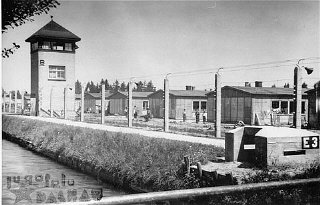







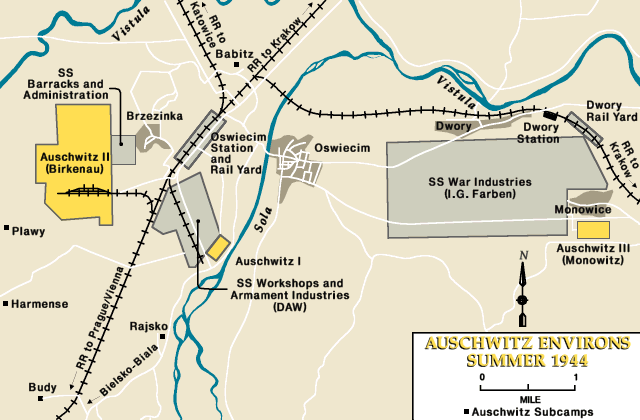


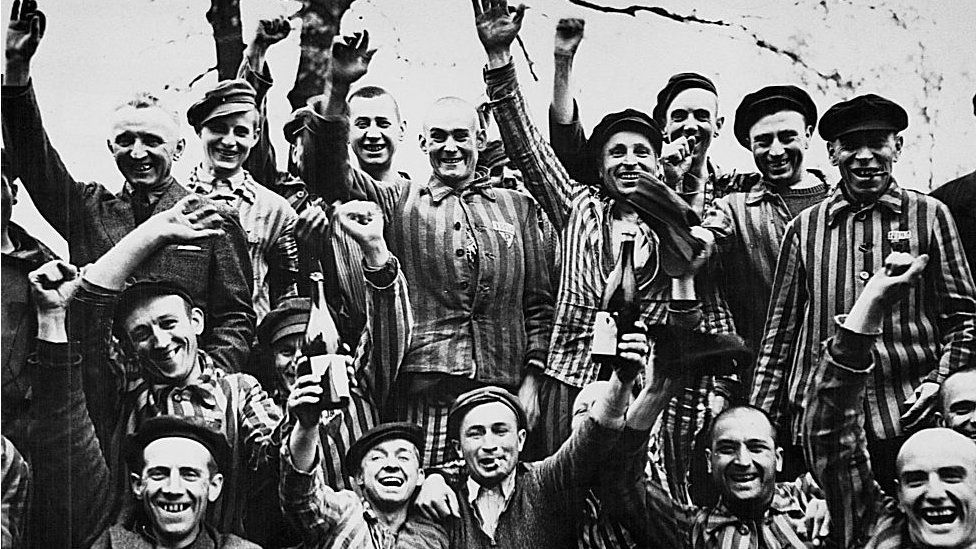
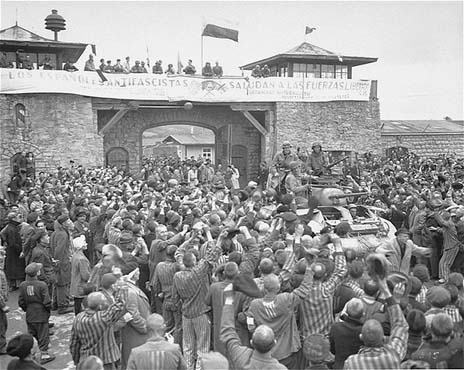
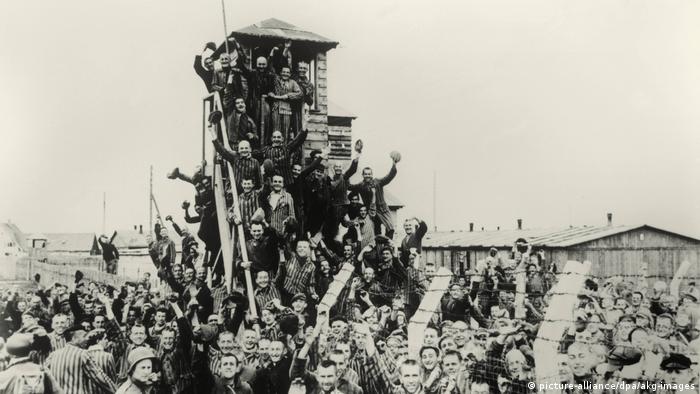
Comments
Post a Comment